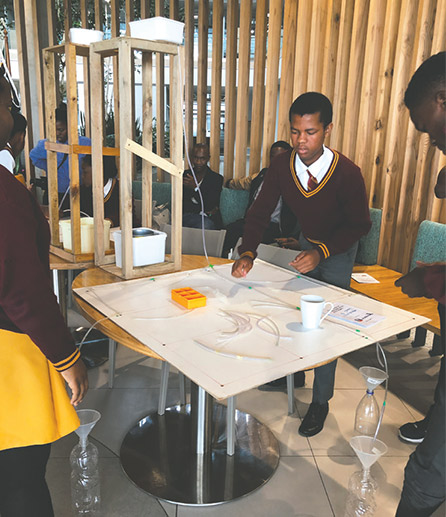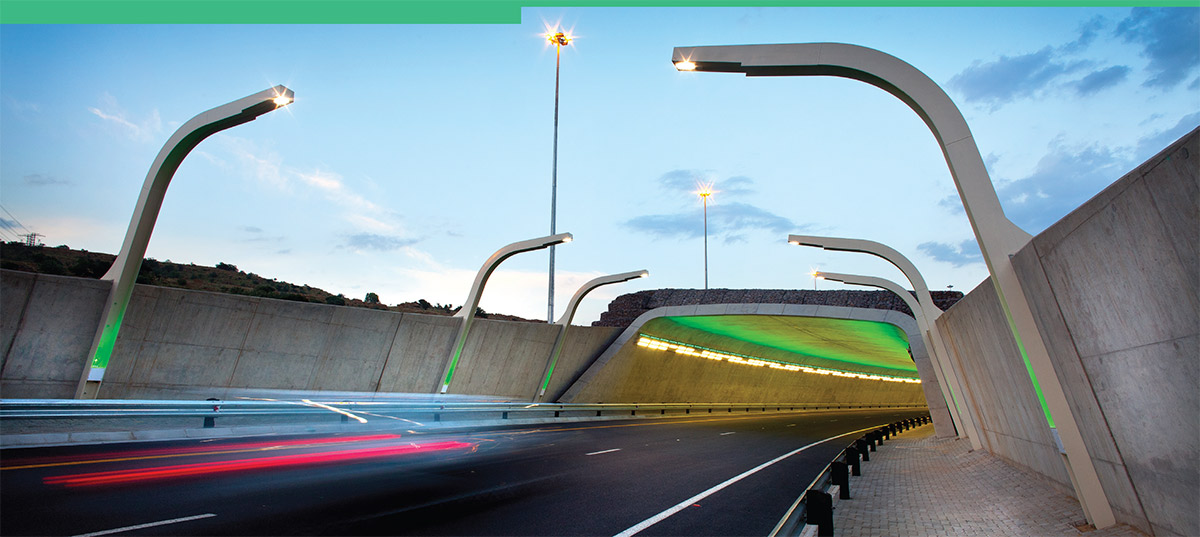Saice water competition
SMEC was part of the
South African Institution
of Civil Engineering (Saice)
Aqualibrium competition.
Saice hosted the one-day competition
at SANRAL’s Southern Region offices
on 17 March to afford learners the
opportunity to plan, design, construct
and operate a water distribution
network, whereby they encounter
similar challenges to those that occur
when managing the actual water
distribution network of a town.
This competition demonstrates
the importance of managing water
distribution systems, which are
important to supply safe and clean
drinking water to people. It also
exposes the learners to the field of civil
engineering and provides a glimpse
into why civil engineers play a critical
role in our infrastructure management.
The participating schools included
Framesby High School, Alexander
Road High School (one team), Ncedo
Secondary School (two teams), VM
Kwinana Senior Secondary School
(three teams) and Pearson High School
(two teams).
The competing teams were tasked
to design a model water distribution
network to distribute 3ℓ of water
equally between three points on the
grid using two different diameter
pipes and various connection pieces.
They were then judged on how well they executed the task -
working on a
penalty points system.
The teams had approximately one
hour in which to plan, design, build and
operate their network.
The competition creates awareness
regarding the issues surrounding
water in South Africa. It spreads the
message that water is a precious
commodity, which should be recycled,
reused and respected. Through this
annual competition, Saice takes the
responsibility of spreading the news that
water should be used wisely and that
infrastructure should be maintained.



SANRAL recognises the value
of building our country and
our continent’s knowledge
economy by creating
platforms for knowledge sharing and
skills transfer. Last year, the agency’s
Western Region hosted a delegation
from the Uganda National Roads
Authority (Unra) in the Western Cape.
This group specifically came out to
compare their existing infrastructure
and systems with those of SANRAL,
to take lessons from successfully
implemented construction projects
in South Africa and to benchmark
against industry best practise as they
endeavour to improve their systems
and upgrade their national road
network.
While the magnitude of the respective
agencies’ road network is very similar
(22 197km under SANRAL jurisdiction
vs 20 540km under Unra jurisdiction),
there were stark differences in the way
the network is maintained, managed
and developed. SANRAL does not
maintain any gravel roads, while Unra
still has to maintain roughly 16 000km
of gravel roads. SANRAL allocates
54% of its total budget to maintenance,
while Unra sets aside only 8% of their total budget for maintenance and upkeep. The need to implement a Road Incident Management System urgently was also identified, as was the need to refine procurement policies to counter corruption and ensure compliance to treasury regulations.SANRAL’s former Western Region Manager Kobus van der Walt said: “Several other issues were identified and we committed to support and continuous knowledge sharing with Unra, beyond what we shared with them for the week that they
were in Cape Town.
We are industry leaders
in Africa and as such it is our duty
to empower and support other
developing African countries in their
quest to improve infrastructure. It
only serves to benefit our entire
continent economically if road
infrastructure is prioritised and
developed to its maximum potential.”
Though the post of Western Region
Manager has more recently been
filled by Randall Cable, SANRAL
remains committed to knowledge
sharing with sister agencies across
the continent.
 Building South Africa through better roads
Building South Africa through better roads